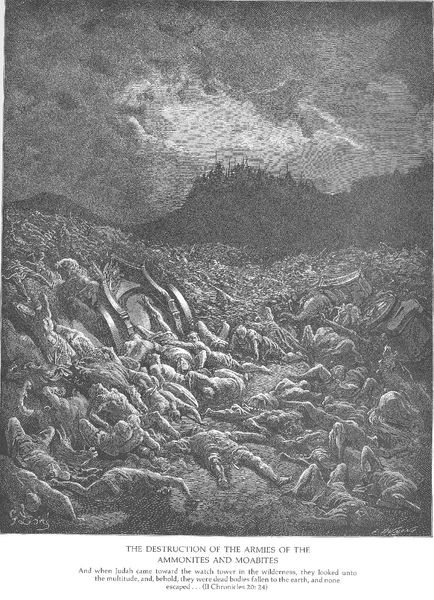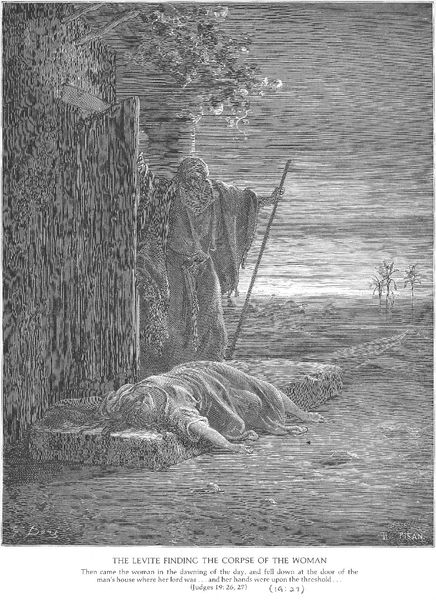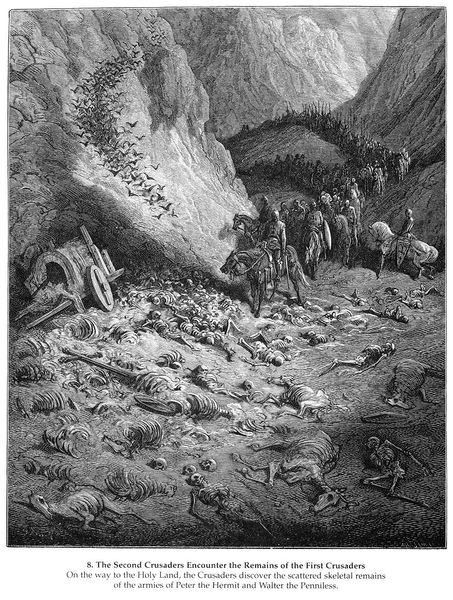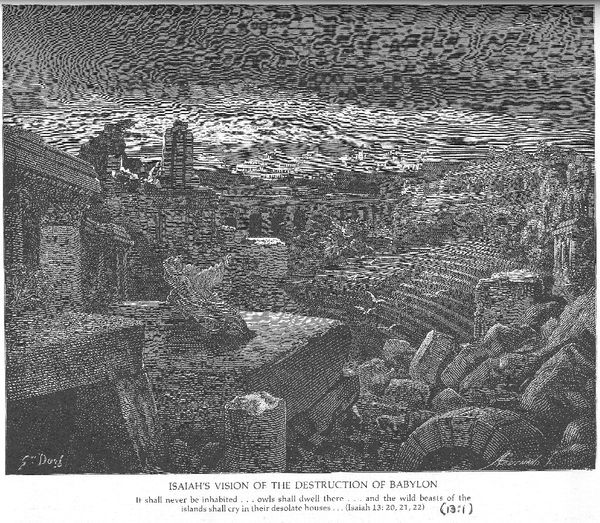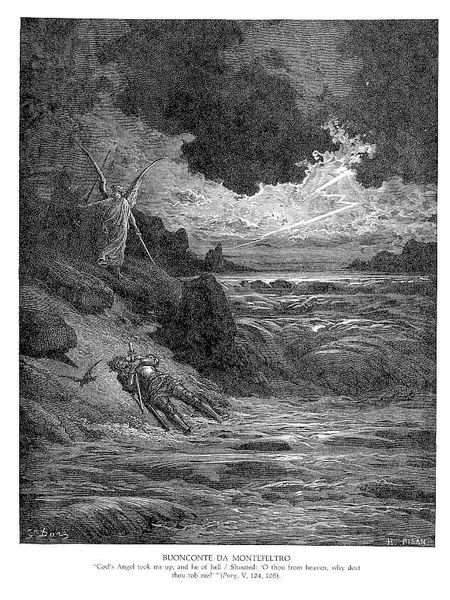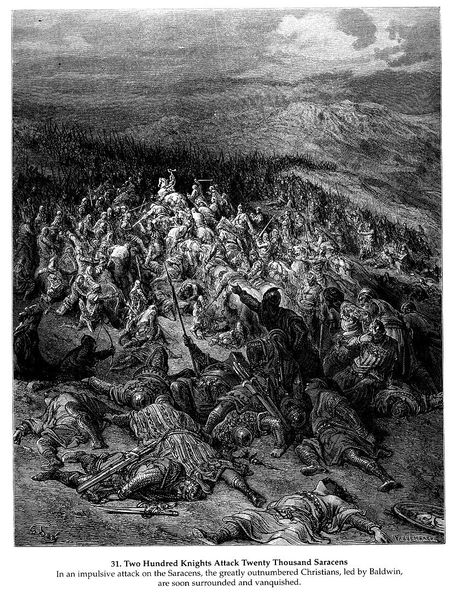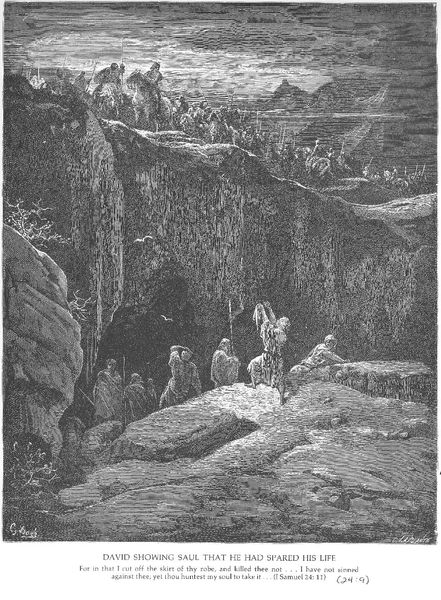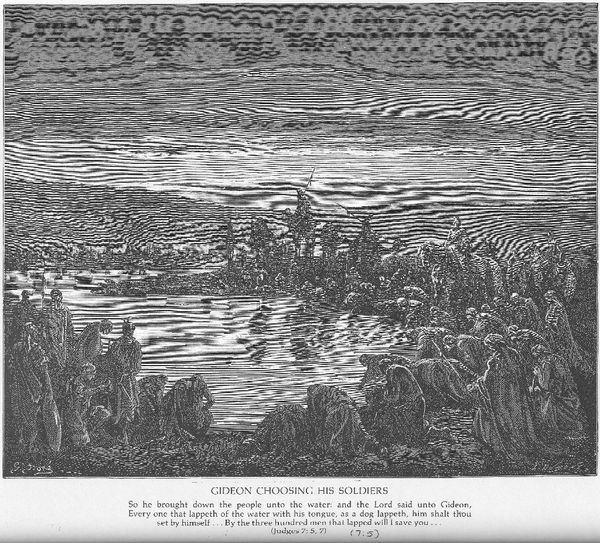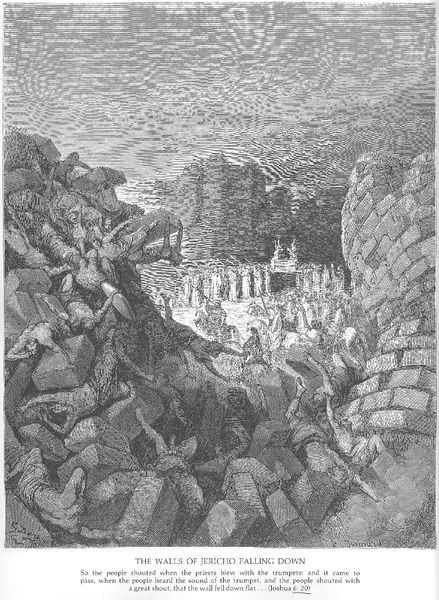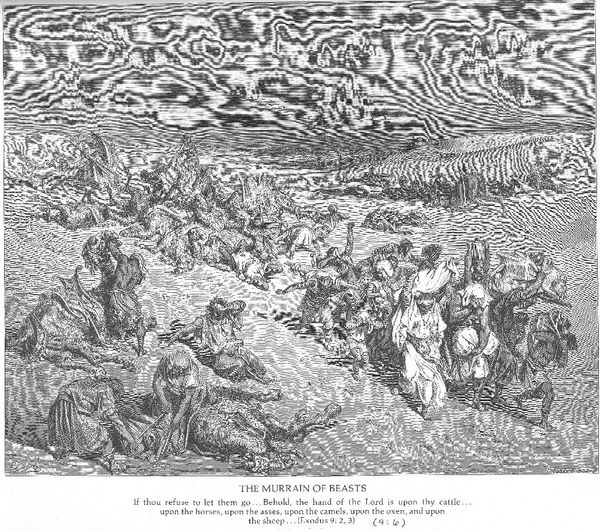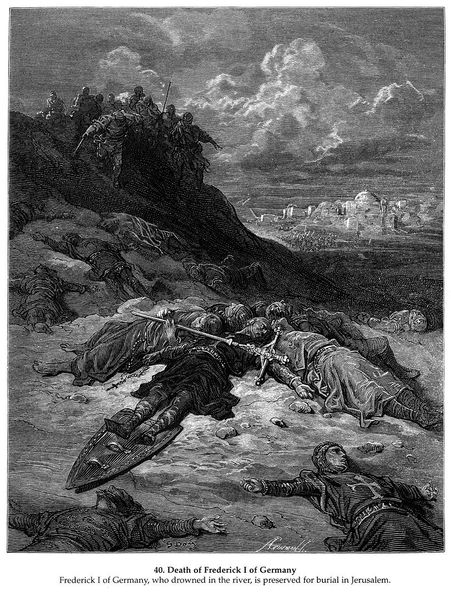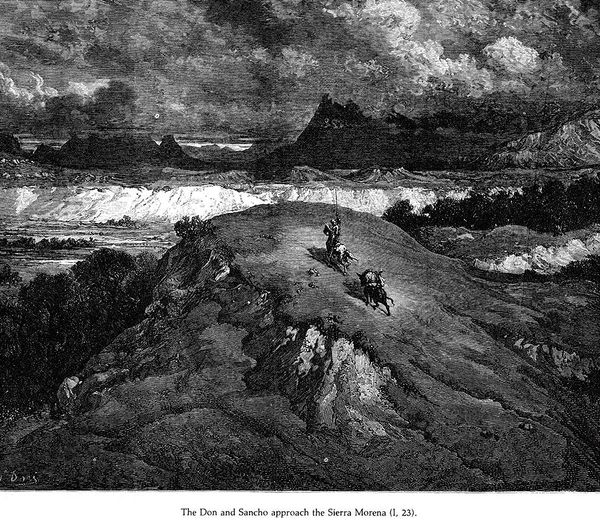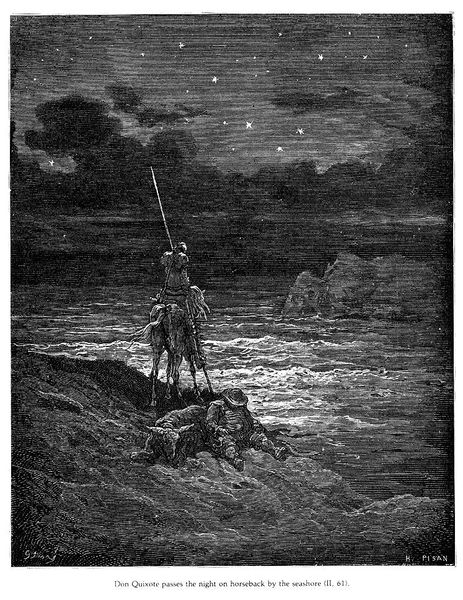
drawing, print, engraving
#
drawing
#
narrative-art
# print
#
death
#
landscape
#
perspective
#
figuration
#
text
#
folk-art
#
romanticism
#
christianity
#
line
#
history-painting
#
engraving
Copyright: Public domain
Curator: This engraving is titled "The Death of Gideon's Sons," and it was created by the celebrated French artist Gustave Doré. He’s perhaps best known for his dramatic and detailed illustrations of literary classics. Editor: Oof, what a grim spectacle. The composition plunges us right into the aftermath of, well, a massacre. It feels staged, like an Old Testament drama caught at its bloodiest climax, but a kind of awful sublime feeling washes over me. Curator: Doré uses a highly dramatic Romantic style. We can almost feel the artist emphasizing the macabre nature of the scene, and, the terrible fulfillment of biblical destiny. The slaughter of Gideon's seventy sons is recounted in the Book of Judges. The act becomes a pivotal, and cautionary, historical moment. Editor: And the perspective! The bodies are heaped in the foreground, blocking any sense of escape or peace. And yet, beyond them, that procession carrying out the deed retreats into the distance, indifferent, shadowy. It's a bleak commentary on power, on the consequences of ambition, right? I think this print feels deliberately staged for maximum emotional punch, for pure theater. Curator: Absolutely. The high contrast and stark lines— hallmarks of engraving as a medium— emphasize the graphic nature of the violence. And those bodies... scattered almost haphazardly, robbed of any dignity in death. In iconographic terms, this chaotic disposition speaks to the utter disregard for human life, but even more so, to divine justice unfolding. Doré invites us to witness both the horror and the purported justification. Editor: Divine justice... or just another power grab veiled in piety? I guess the image refuses to offer easy answers. Looking at the text underneath the image itself feels so unsettling; the bible passage juxtaposed against the bloody deed leaves a sour taste. I’m definitely feeling contemplative and somber as I see this play of lines giving depth and weight to the tragedy depicted here. Curator: It’s true. Doré challenges viewers to consider the ambiguities inherent in these foundational narratives, the violence encoded within religious and political power. A dark chapter indeed. Editor: Definitely leaving me with more questions than answers. So much for a light stroll through art history.
Comments
No comments
Be the first to comment and join the conversation on the ultimate creative platform.
